1989 was a banner year for fans of the Big Three fright franchises. Earlier in the year, Crystal Lake junkies got their slasher fix when their favorite hockey masked maniac took a cruise to the Big Apple. Then, towards the end of the year, Haddonfield’s prodigal son picked up his sharp implements and went to town on the various and sundry youths populating the small Illinois town. But, back on August 11th, Elm Street’s favorite fiend was getting ready for a new arrival courtesy of a much-maligned fourth sequel, A NIGHTMARE ON ELM STREET 5: THE DREAM CHILD. A moderate success upon its release – hitting the box office at number three its opening weekend, right behind PARENTHOOD and THE ABYSS … (sure, Jan) with an impressive gross of $8,115,176, and fell fairly quickly in its subsequent weeks, landing near the bottom of the top fifty grossers for 1989. Even still, it remains firmly ingrained in horror pop lexicon, recently in 2017’s IT, the film appeared as a movie for the Derry-ites to screen. As we now approach its thirtieth anniversary, Brett Gallman and Nathan Smith are going to take a look back at the good, the bad and the ugly of THE DREAM CHILD for Daily Grindhouse. Pop your champagne, light your stogies, destroy a sacred landmark with an out of control gender reveal party … do whatever you must, but get ready to dig in and read – it’s a hell of a ride!
Nathan – My first memories of THE DREAM CHILD were cruising the horror section of my video store, this would’ve been about four or five years out from its theatrical release, and seeing the Media Home Entertainment VHS on the shelf – Freddy sitting over the diabolical baby carriage, a single bladed fingertip to his barbequed lips, hushing the prospective renter. Now, I didn’t rent this tape out of the store, to my best recollection, but rather viewed it on one of the deep-cut, basic cable channels like Flix or Encore, and it naturally terrified me since I was too young to see Freddy for what he really is in the DREAM WARRIORS/DREAM CHILD/FINAL NIGHTMARE cycle – nothing more than a loveable, murderous scamp (though frightened, I do remember loving the comic book nightmare sequence with Mark). Alice’s first nightmare sequence, trapped in the enclosed shower, freaked me out because there was an eerily similar one in my grandma’s apartment.
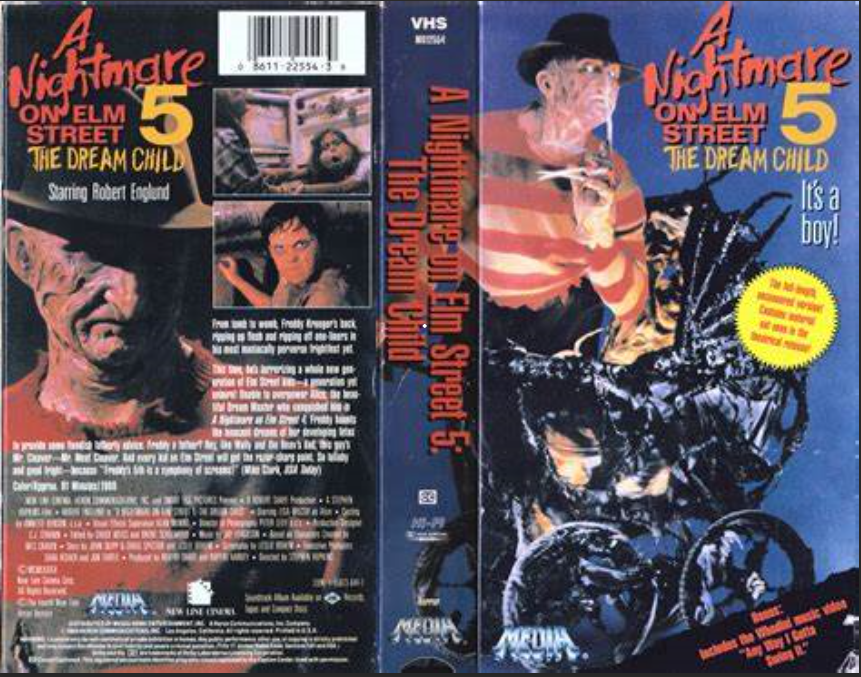
Another thing that sticks out in my mind is THE DREAM CHILD’s VHS box copy, because the real draw for viewers in renting the tape was that it promised a “full-length, uncensored version. Contains material not seen in the theatrical release,” which was a brand new prospect for movie-watchers. Now, I can’t recall the uncensored content that was on the VHS, though I’m betting it was the more gruesome kills in the film (presumably the gory footage from NEVER SLEEP AGAIN), or maybe it was more scintillating body double footage of Alice in the shower at the film’s beginning. Who knows? Brett, what are your first memories of THE DREAM CHILD and did you expect an episode of Freddy Krueger’s Elm Street Diaries over the opening credits?
Brett – I’m just old enough to have hazy memories of the tail-end of Freddy-Mania. My family didn’t have cable in ’88, so the MTV aspect was completely lost on me; however, FREDDY’S NIGHTMARES was a weekly staple in our household, and it seemed like Freddy was everywhere with the DREAM MASTER ad campaign, which speaks to just how popular this franchise was at its peak. But I guess it also speaks to how quickly it fizzled out that I can barely remember DREAM CHILD being released at all, even though it was just a year later. Like you, I first encountered it on VHS at some point between ’90 and ’92, when FREDDY’S DEAD hit video (I definitely remember renting that one the first weekend it was available). For whatever reason, I specifically remember repeatedly renting it from grocery store with a tiny video section for the cool price of 99 cents. I have no idea if that’s where I first rented it, but I could almost certainly show you exactly where DREAM CHILD was on the shelf if that store were still standing.
Anyway, yeah, that unrated sticker was definitely eye-catching. If I ever rented the theatrical version, I don’t recall because I’m not even sure any stores around here even carried it. I want to say I didn’t even see the R-rated version until DVD, but we’re talking about 25+ year-old memories at this point. In hindsight, it seems really fucked up considering I wasn’t even 10 years old yet, and the unrated cut is super mean-spirited. Both Dan and Greta’s deaths are more gruesome, especially the latter’s—frankly, Greta’s death is kind of nonsensical in the theatrical version if you’ve seen the unrated cut and know what Freddy is really feeding her. It might be the sickest death in the entire franchise.
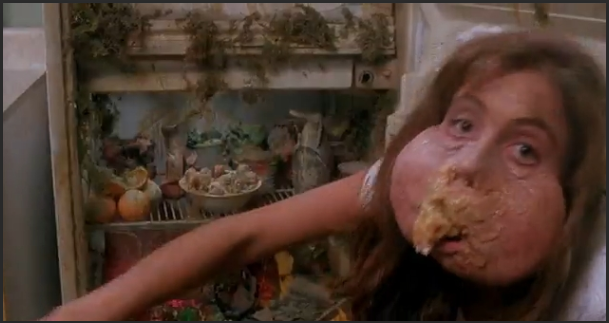
But as messed up as it all sounds, I can’t say I was ever really scared by this one; because I’ve always known Freddy to be sort of the clown prince of horror, I was never able to be scared of him. I mean, the first time I can recall seeing him was in the FREDDY’S NIGHTMARES episode “Rebel Without a Car,” where he pops up in a car trunk and spits out some one-liners. Outlandish moments like Super-Freddy have always felt natural to me, even if my adult eyes can see how the tone clashes wildly with the moody, gothic fairy tale aesthetic Stephen Hopkins was going for. As incoherent as that weird sex scene is during the opening credits, it certainly sets a sort of glum tone: it’s a long way from Tuesday Knight belting out a power ballad over the DREAM MASTER credits, that’s for sure. Do you feel like Hopkins really nailed that vibe down? I feel like DREAM CHILD definitely has those moments, but I really can’t fault anyone who thinks it plays out like some bummer retread of the previous two movies.
Nathan – I’m with you on Greta’s death being the sickest death in the franchise, it reminds me of the Mr. Creosote scene in THE MEANING OF LIFE. It’s also tremendously depressing, since she’s being harangued by her wretch of a mother right up until she chokes to death. What a bummer! It’s not my favorite nightmare of the film, I’ll get to that in a moment. As for your previous question, I think that Hopkins acquits himself just fine, at least enough to land a lucrative directing gig on something like PREDATOR 2 just a year later. It’s insanely impressive that he managed to get THE DREAM CHILD filmed and released to theatres in just eight weeks! I don’t think that he brings as much visual flair to this entry that Renny Harlin did for THE DREAM MASTER, however New Line adding another foreign director like Hopkins gives the film a little inventive Gothic look that we might not get with another American behind the lens (an example being the abandoned, castle-like structure in Springwood Hospital). The influence is evident in the way the camera spins around the patients in their enclosure in the first nightmare. The close-ups on the sweaty, crazed folks feels like something out of a French fantasy film like THE CITY OF LOST CHILDREN and though it may not be apparent, the Dario Argento mystery element (a character will yell something out that’s key to solving a puzzle, but it will be obscured in some way, so that it may later be solved towards the end of the film), weighs heavily in the scene where Amanda Krueger yells out to “find her in the bell tower,” which reminds me of the rain-drenched, puzzle solving anecdote at the beginning of SUSPIRIA, and of course, is integral to fighting Freddy at the climax. I’m probably the only person who sees this.
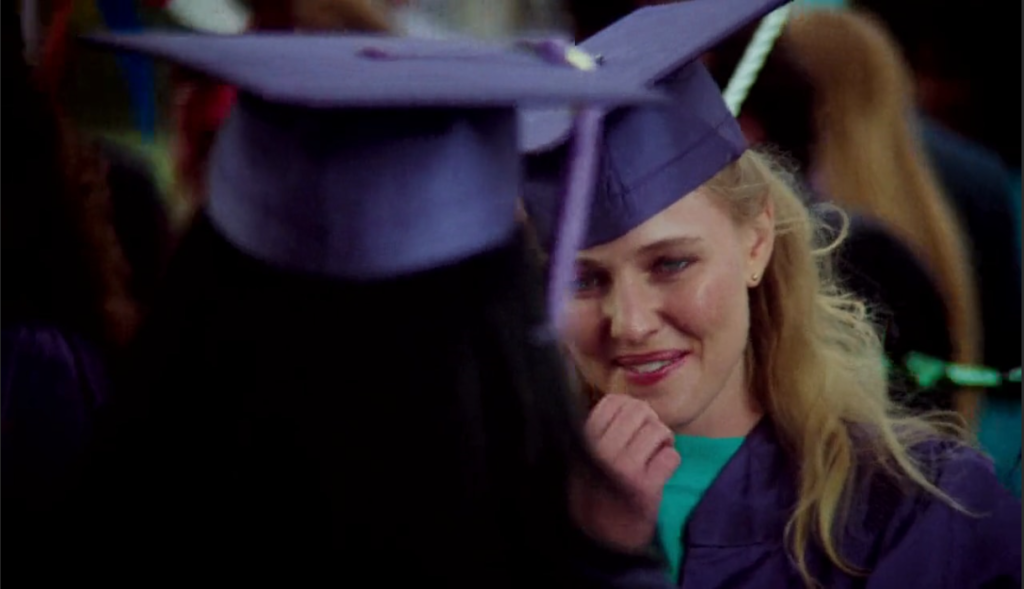
As for what I enjoy about the film – firstly, the character growth for Alice’s father from THE DREAM MASTER to THE DREAM CHILD, cleaning up his act, is actually one of my favorite elements in the film. It’s such a little detail, and though he’s not in the film a whole lot, it’s still nice that they touched on it. Considering that he could have gone down as a redux of Nancy’s mother from the first film, seeing him be a supportive father to Alice, especially after Dan’s parents come in and try to take her unborn child away just ingratiates the character further. It’s another minor thing, but him standing in the back while she graduates, so he doesn’t embarrass her is very sad, but all too real. Hell, bringing Alice back to face off against her foe is something that horror franchises don’t do all that often, maybe Sidney Prescott in SCREAM? Usually the survivor of the previous entry is killed off before the new kids wander in to take their time in the spotlight. It felt cool to see Alice, who was a replacement for the last of The Dream Warriors, not only get to tackle Freddy again, but once more walk away victorious. I also appreciate the shocking balance in killing Dan off, because as an audience member, you’d think “well, since the other person from the last film survived, then maybe the other one will as well.” Wrong! I also thought that those crazy kids, Greta and Mark, felt like a good “couple.” Maybe they weren’t, and maybe it was just wish fulfillment (a model and comic book geek getting together). Did I see something more there than there actually was? Also, though it’s only briefly touched on, Mark suggesting Alice getting an abortion (though he dances around actually saying “abortion”) to stop Freddy and save everyone is a ballsy move for a mainstream, American horror film. Before I dig into what doesn’t work for me with THE DREAM CHILD, what do you love about this oft-maligned entry?
Brett – Good call on how Hopkins echoes Argento—I’d never really considered that before, but THE DREAM CHILD definitely has that nightmarish, Eurohorror vibe at times. It’s one of the things I definitely love about this one, especially whenever Hopkins just goes for it with the bigger, more gonzo sequences. The bookending nightmares of Freddy’s resurrection and his climactic showdown with Alice are bursting with the type of outlandish imagination that came to define this series, only they play like a Gothic B-side to the candy-colored, funhouse aesthetic of its predecessors. From a purely visual standpoint, THE DREAM CHILD can hang with any of the films in the series: I love how big, bold, and unapologetically stylish it is, right down to the way it reimagines Westin Hills as a labyrinthine, Gothic haunted house. I’m not sure how Hopkins didn’t remain a big deal after directing this, PREDATOR 2, and JUDGMENT NIGHT, but I’m guessing he’s due to become a cult favorite (if he hasn’t already).

I’m with you when it comes to the characters. I, too, love how Mr. Johnson overcame his alcoholism and reformed between the two movies. In a series that’s fully of shitty parents, this is a terrific departure that points towards a more mature, nuanced direction in some respects (which I suspect is why audiences didn’t exactly dig this one—but more on that later). Tackling abortion head-on accomplished this too, and, speaking of that: I’ve seen DREAM CHILD interpreted as a pro-life movie (ironic considering angry parents boycotted its original poster, which had a fetus instead of a carriage), but I’m not so sure. If anything, it’s a pro-choice movie because Alice so adamantly defends her own decision to both have Jacob and raise him. It’d be one thing if the mention of abortion were accompanied by some kind of obvious moralizing, but it seems like it’s something that’s already crossed Alice’s mind. That doesn’t sound like a fervently pro-life movie to me.
As for the rest of the characters, I’ve always felt like these were sort of the “Lost Elm Street kids” who had a tough act to follow after both DREAM WARRIORS & DREAM MASTER. But, like all of the movies in the proper series, DREAM CHILD really invests in them and their camaraderie. Even a character like Greta—who’s barely around long enough to leave much of an impression—really captures the sort of angsty dynamic you find in most of the ELM STREET series. You really feel the loss of her character because the others dwell on it, especially Mark. I’m not sure if they were actually a couple myself—I’ve always read it as an unrequited sort of relationship that remained on good terms anyway. You could easily imagine a lesser movie painting Greta to be a total bitch to Mark and making her completely disposable, but ELM STREET was never really into doing that. Even here, in the fifth movie, when people were mostly showing up to see Freddy do his thing, each character really matters. Bringing Alice back—and having her survive again—feels like a reflection of that: as shaky as the script is (which is bound to happen after so many rewrites), her fight to defeat Freddy and protect her unborn child is a compelling core. Honestly, Alice has always been my favorite ELM STREET gal, and I’ve always wished Wilcox could have returned for a sequel, even if it is nice to assume that Alice went on to live happily ever after.
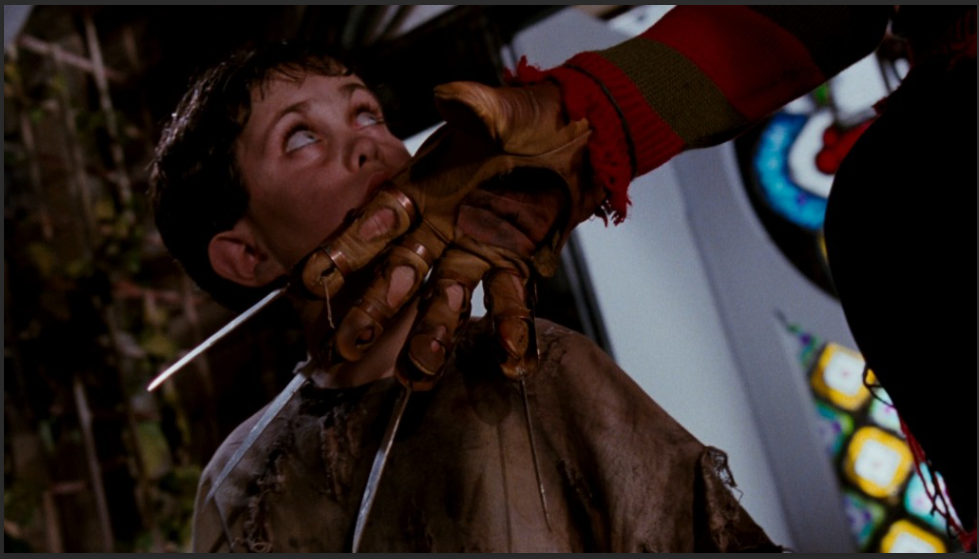
At any rate, let’s talk about the main reason people were showing up for A NIGHTMARE ON ELM STREET 5 in 1989: the man himself, Freddy Krueger. Like I’ve said before, I’ve never been too bothered by the comedic aspects of the character, though I can certainly understand why some people feel like chef and Super Freddy are a bit too much. I wasn’t even a huge fan of the latter myself until the last decade or so, once I finally just gave in to the demented charms of this movie. It really shouldn’t have been so hard considering how much fun Englund was obviously having this time out. He brings a lot of energy to an otherwise somber movie, and I love how David Miller’s makeup makes Freddy feel like a genuinely grotesque goblin again. What do you think: is Freddy a little bit too over-the-top in this one, and is that maybe the reason audiences just seemed to abandon him within the space of a year?
Nathan – Oh, boy, I think you’re going to hate me for this – I know Freddy’s your dude (I love the character dearly, but Mr. Voorhees takes up more space in my heart), but this iteration of Freddy might be the worst one committed to celluloid. Don’t get me wrong, Englund gives his all every second he’s on camera, imbuing this incarnation of Freddy as a smirky, cocky dream killer. Miller’s makeup is fine –I can jive with the dark circles around his eyes – a haunted Freddy, for one, but the more I revisit the older films, I miss the Yagher design (FREDDY’S REVENGE is my favorite looking makeup), because he made Krueger look grisly. Freddy’s dialogue sounds like it is one hundred percent ADR, there’s too much warble to it, rather than the gravelly, throaty speech pattern we were used to. In keeping with the film’s comic book stan Mark, Freddy is a character straight out of a NOES one-shot where he volleys a pun per panel. He only speaks in one liners by this point in the series, which is the biggest criticisms lobbed at the character by detractors. I truly love the piggish, black comedy lines that Freddy gives, but in THE DREAM CHILD, it’s all lousy stuff like “fuel injection” and “fast lane” to give a sample of the staggering bon mots that the dream killer drops. Gone are the menacing lines like “this is God.” Although, I love “faster than a bastard maniac,” because it fits the comic book aesthetic of Mark’s nightmare. Though the redundancy of “loco-madman” makes me grit my teeth.
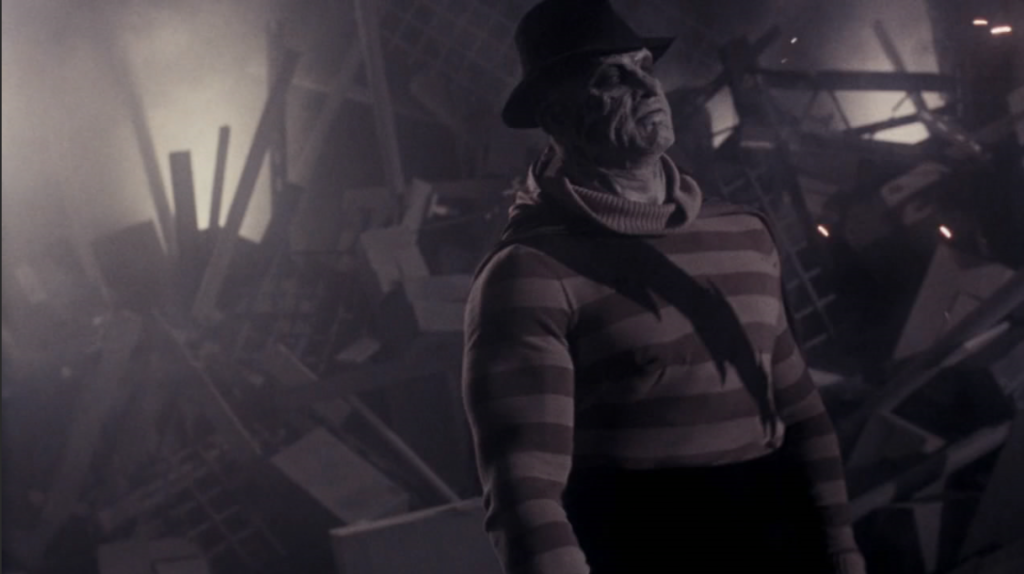
Other than Freddy being the main draw, the nightmares are another big reason to put butts in seats, so let me engage with the nightmares, both good and bad, in the film. As you mentioned, Greta’s character is really a sketch, and her nightmare is almost over as quickly as it began. It’s gruesome, but really the only reason it impacts me is because I like how they realized the character, despite the thinness (pun absolutely not intended). I admire the creativity of Mark’s comic book nightmare, because it’s fueled with the unique visuals that the ELM STREET films are known for (I know that’s a hill that I’m probably going to die alone on), but my absolute favorite is the Dan nightmare because it just keeps increasing in its crazed creativity – Freddy guzzling a hellacious magnum of champagne and spewing it out, bathing everything in its acidic aftertaste, I adore the gruesomeness of Freddy ripping his arm off and just mushing it into the dashboard. It feels so random, and gives the feel of the splatter punk that was all but assuredly cut out with its multiple re-writes. The way that Dan’s demise unfurls into a Cronenbergian tableau, with the smoking charred, almost GHOST RIDER-esque (again, I’m finding Hopkins’ comic book influence everywhere) hellion is both striking and grotesque in its beauty. The one non-murder nightmare that really stood out to me upon re-watch, was Freddy in utero assaulting Alice’s baby, Jacob. It was very ominous feeling, very dark and very muted. As we wrap things up, I’d like to know what your favorite nightmare sequence is and do you think THE DREAM CHILD is as bad as the reputation it’s seemingly earned?
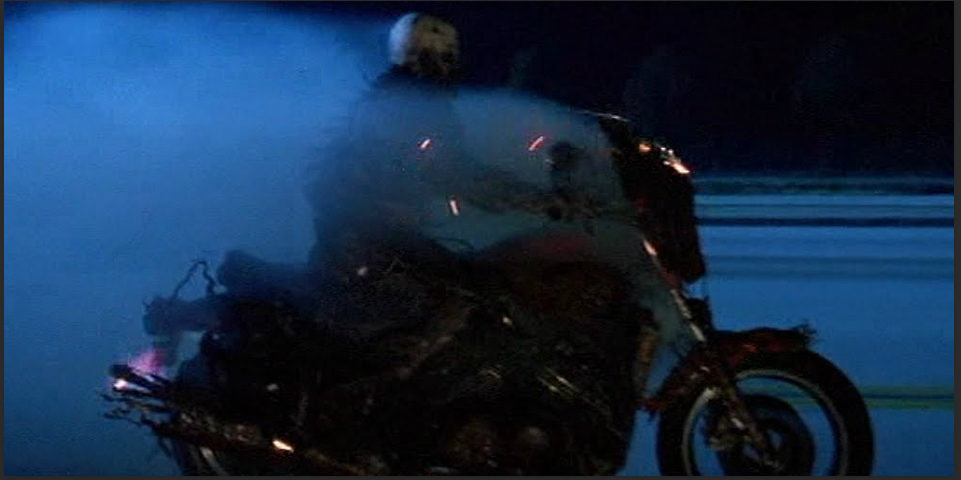
Brett – You actually won’t hear many arguments from to the contrary about Freddy here. You’re right—he is my dude, but, if you had to point to the movie where he completely descended into pure caricature, this is the one. The one-liners—especially during Dan’s nightmare—are really out of control here; it’s almost as if they decided to leave every single one of them in from each draft that was written, so Freddy basically does a stand-up routine for each death. But as long as it’s Robert Englund spitting them out, they can’t be that bad, and his turn is as fun and energetic as ever. Plus, like I mentioned before, the new(ish) look is refreshing. I especially love the shot of Freddy post-resurrection, with that skeletal arm placing the hat back on his head (which, of course, is followed by a quip).
I just wish they had taken the opportunity to develop Freddy as a character a little bit more: it’s hinted that he’s afraid of his mother, yet that barely plays a role in the film at all. Hell, he’s already thwarting her plan when we last see him bursting from her stomach at the end, so I’m left wondering how important that subplot is at all. Then again, I suppose you could say the same for most of the ELM STREET movies, which hint that we haven’t seen the last of Freddy before their credits roll. (Speaking of which, have you ever noticed that the blanket Alice wraps Jacob in at the end is patterned like Freddy’s sweater? It might be the only subtle moment in the whole damn movie.)
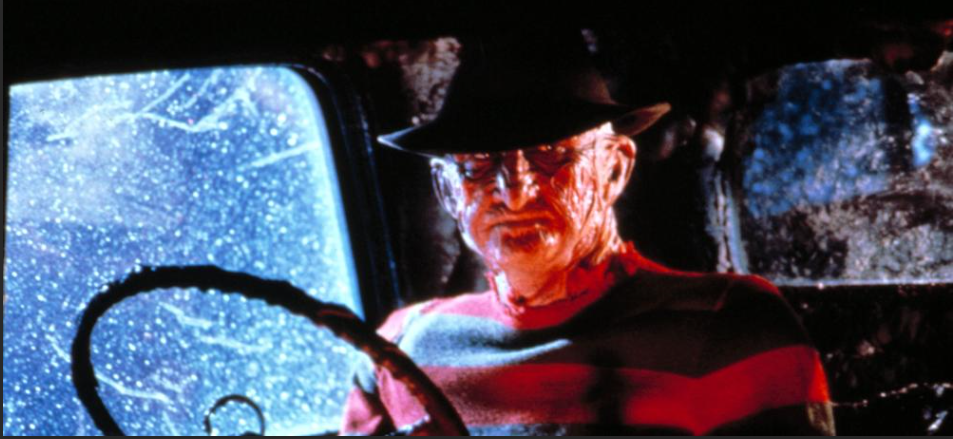
If I had to pick a favorite nightmare, I’d probably go with Dan’s, too: it’s clearly the standout sequence, especially from an effects standpoint. There’s some real TETSUO shit going on there, and I’ve always been unnerved by how dehumanizing Dan’s demise is. Freddy turning Debbie into a human cockroach in DREAM MASTER was a tough act to follow from a body horror standpoint, but Hopkins and company crafted a truly worthy successor with this scene. Mark’s death is kind of on the other end of the spectrum: while it’s also dehumanizing, it’s so cartoonish that it doesn’t really feel horrific. To be honest, it was among my least favorite moments in the entire series for a long time: as a kid, it never bothered me (because, come on, Freddy riding a skateboard rules), but as I moved into my teens and twenties, I kind of resented how it turned Freddy into a literal cartoon. But now that I’m even older, I appreciate it again: if anything, the manic energy is infectious, and it’s a nice break from the film’s somberness. Also, it’s just striking as hell: I love how Hopkins embraced the comic book aesthetic to twist Mark’s daydreams into a total nightmare. Good stuff—I even own a Super Freddy figure, which is something I never thought I’d bother to have in my collection a decade ago.
Speaking of tough acts to follow: can you imagine being in the writer’s room trying to resurrect Freddy after the previous movie raised him from the dead with flaming dog piss? Believe it or not, I think DREAM CHILD pulls off Freddy’s resurrection even better by revisiting his conception at the hands of a 100 maniacs in Westin Hills. It’s one of the franchise’s best uses of pure nightmare logic, and I love how it slowly escalates from Englund’s wry glance into the camera to Freddy’s rebirth as a demonic fetus before Hopkins punctuates it with a genuinely great jump scare when Alice “wakes up” to find the Springwood Slasher in the bed with her.
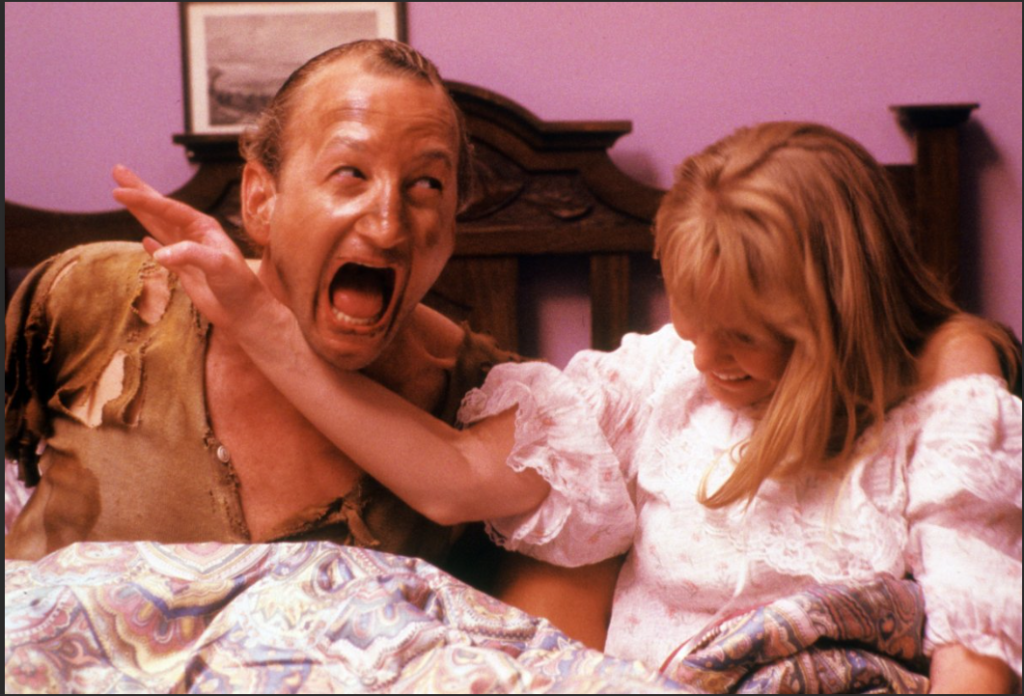
You know me: of course I’m going to say THE DREAM CHILD isn’t as bad as its reputation suggests, but I will also acknowledge that I love this series to a deranged extent. I don’t think any of the Englund films are bad at all because even the later sequels—including FREDDY’S DEAD—are bursting with such a manic imagination that you can’t deny them. I truly believe that A NIGHTMARE ON ELM STREET is the greatest of all the horror franchises. Now, I will concede that DREAM CHILD lurks somewhere near the bottom, perhaps even the very bottom, depending on my mood. However, Freddy’s worst is still so much better than any other franchise’s worst; where some FRIDAY THE 13th and HALLOWEEN entries feel like chores to revisit, I eagerly look forward to every single NIGHTMARE whenever I find the time to watch them.
Of course, I recognize I’m very much in the minority, especially when it comes to DREAM CHILD, which was dismissed right out of the gate. I’ve always found it incredible that the fickle winds of pop culture shifted so quickly on Freddy: one year, he was the toast of Tinseltown, conquering both the big screen and the small screen; the next, he was pretty much yesterday’s news. Interestingly enough, the Horror Goodies twitter account recently posted a picture of Tommy Timpone’s Gorezone editorial surveying the box office carnage for Freddy and Jason in 1989. He cites overexposure as the main culprit and insisted horror fans were already eager to move on to something new by that point, which may have been true.
However, I’ve grown to think maybe it was more complicated than that. Yes, Freddy was everywhere and had descended into self-parody, but I think there may have just been a cultural desire to leave the 80s behind in general. It’s always been striking to see how the typical 80s aesthetic was practically blasted off of the map within a couple of years on-screen, almost as if everyone decided they were going to abandon day-glo and big hair at the stroke of midnight on January 1st, 1990. Maybe Freddy already felt like a relic in August of 1989, something that was better off left to his own time, along with his slasher contemporaries (all of whom suffered box office declines that year). His audience may have only aged five years at this point, but that’s practically a lifetime in pop culture years. All of those teens that grew up with him were now entering their twenties and moving on to more responsibilities. Continuously turning out for a series of movies where a dream demon hacks up teenagers in their sleep may have seemed silly at this point.
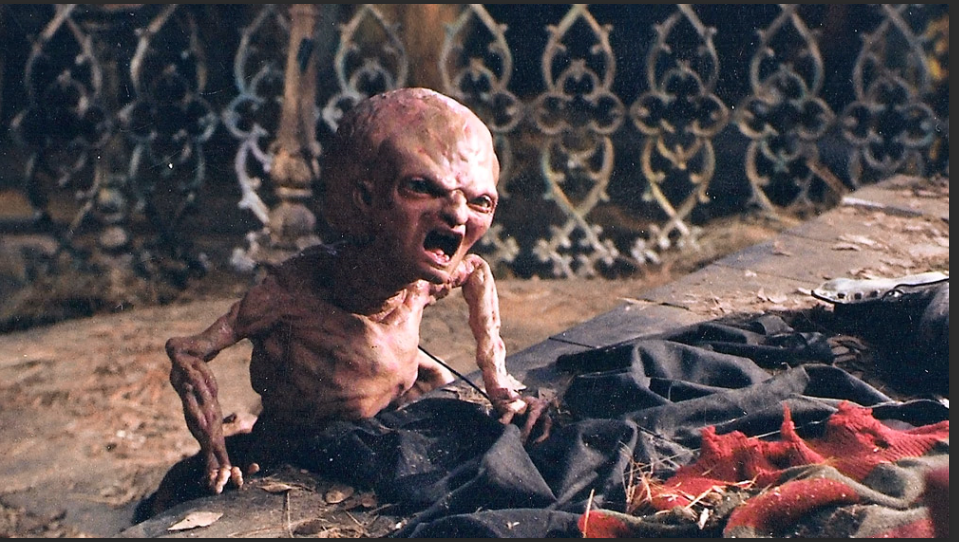
Or maybe it was the opposite: as we’ve already mentioned, THE DREAM CHILD marked a pretty mature turn for the series. Not only did it confront abortion, but it tackled adulthood in general. These are the first ELM STREET kids to grow up, graduate from high school, and, in Alice’s case, become pregnant. All of that seems scarier than Freddy himself, and perhaps contemporary audiences weren’t ready to accept it, especially when it was all wrapped up in a sullen, gothic ghost story that stood in such stark contrast to the previous film. The bubblegum MTV-slasher aesthetic of DREAM MASTER is long gone, and, with it, that weird, nostalgic sense of carefree high school days. Subconsciously, it may have been more appealing that Freddy’s victims remained trapped in this adolescent amber because growing up may have been less appealing. If DREAM MASTER is the raucous party, then THE DREAM CHILD is the sobering comedown that wants to explore and confront consequences and adulthood in a way its audience resisted. I don’t think it’s a coincidence that FREDDY’S DEAD reverted to the troubled kids formula for the franchise’s finale in order to keep the teenage dream—er, nightmare—alive, at least for a little while longer.
—BRETT GALMAN & NATHAN SMITH
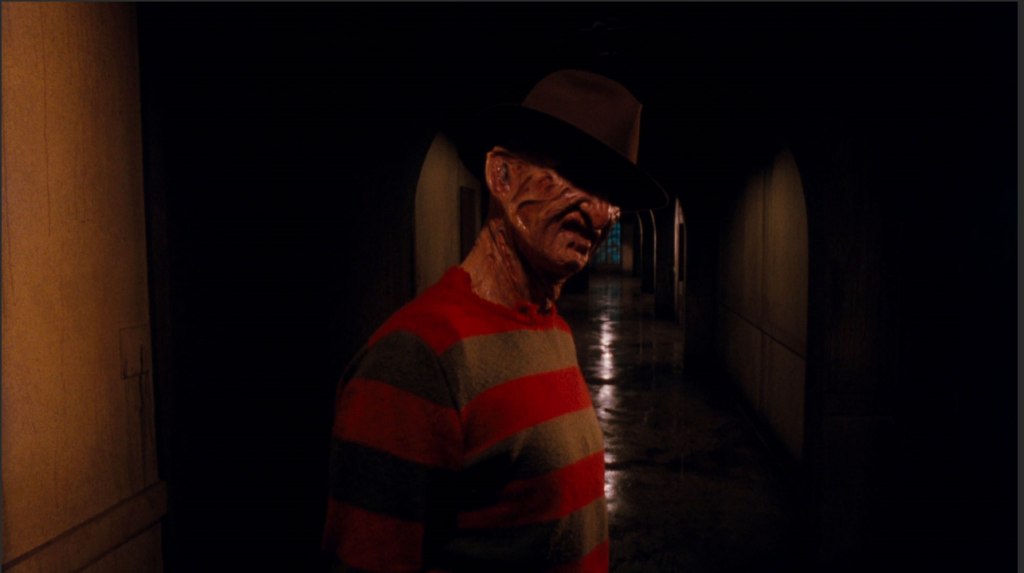

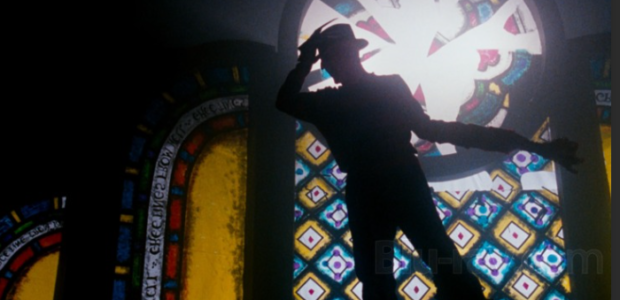
No Comments